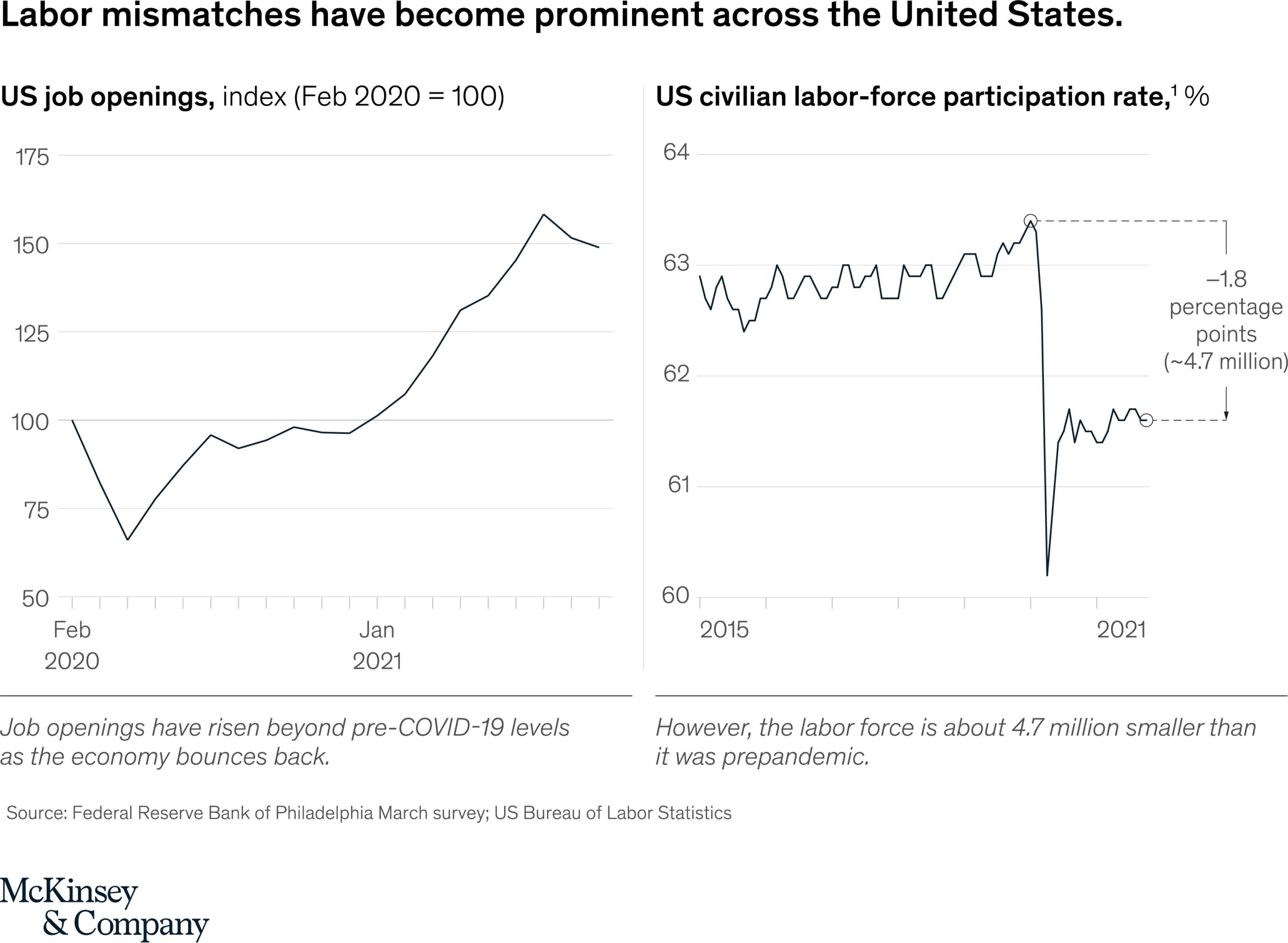March 29, 2022
By Gabrielle ChristmanHiring Trends: Supply Chain Resiliency
Hiring Trends: Supply Chain Resiliency
In the past several years, the global supply chain has been rocked by significant disruptions: the COVID-19 pandemic, climate-related events, geopolitics, and most recently the conflict in Ukraine. These challenges are no longer affecting material goods alone – we are seeing the ripple effects in talent sourcing, procurement, and the labor market as a whole. As a recruiting firm with almost two decades of experience filling positions and sourcing candidates nationwide, we are seeing these effects firsthand on a daily basis. Read on for our assessment of the clash between the supply chain and job market and for our advice on how to build resiliency.
Where We Are
Aftershocks of the Great Resignation have left labor constraints even more dire than supply demands. Since February 2020, over 4.7 million US civilians have left the labor force – these workers make up 1.8% of the overall labor force (Exhibit 1). This deficit is the result of various challenges: layoffs, early retirement, low retention, and unmet employee demands for workplace flexibility and higher wages.
In an effort to compensate, employers have increased wages across industries and at all employee levels. Private sector wages have increased at more than double the rate of pre-COVID growth rates and some industries have spiked even more – transport and warehouse labor wages have increased four times faster than pre-pandemic rates. Despite these efforts to attract and retain employees, job openings nationally remain staggeringly high, and are currently about 50% above pre-pandemic levels (Exhibit 1).
Exhibit 1
Where To Go From Here
Until early 2020, we relied on the supply chain solely for purchasing, however, procurement professionals are now tasked with assessing the health of suppliers and creating business continuity plans. Here are our key recommendations for assessing your strength as a supplier, or the durability of your suppliers, and moving forward.
Analysis: As a supplier, what is your capacity to withstand the pressures of the market? Who are your suppliers and what is their health? What were your most significant COVID-induced pain points? Were there any areas where industry peers were affected but you weren’t? How has your supply, or your supplier, rebounded since 2020?
Action: With your internal assessment as a focal point, it is crucial to think about methods for strengthening current supply practices and developing ways to create new pipelines. As a staffing firm, it was quickly evident that traditional methods of sourcing talent weren’t working in the pandemic-induced labor shortage. We turned to technology-driven strategies to analyze market behavior and shape our solutions. We are now more reliant than we were pre-pandemic on automation, machine learning, AI, and data to make informed decisions and improve productivity.
Assess and Refine: With newly adopted solutions and strengthened internal reporting, you are better able to identify optimized avenues leading to the strongest overall results – combining the greatest ROI with best value delivered to customers. These results should lead to designing action-oriented plans to deliver work products and quick reporting.
—
The dramatic labor supply deficit has had significant effects on the national and global economy, resulting in considerable strain on universal production and productivity. Without a sufficient talent supply, businesses are unable to meet demand initiating ripple effects well beyond their industry. Through outreach with industry peers, leaders, and stakeholders, as well as nuanced internal analysis, fresh approaches, and continuous assessment and refinement, supply chain and labor supply shortages present an opportunity for company growth and long-term organizational resilience.

